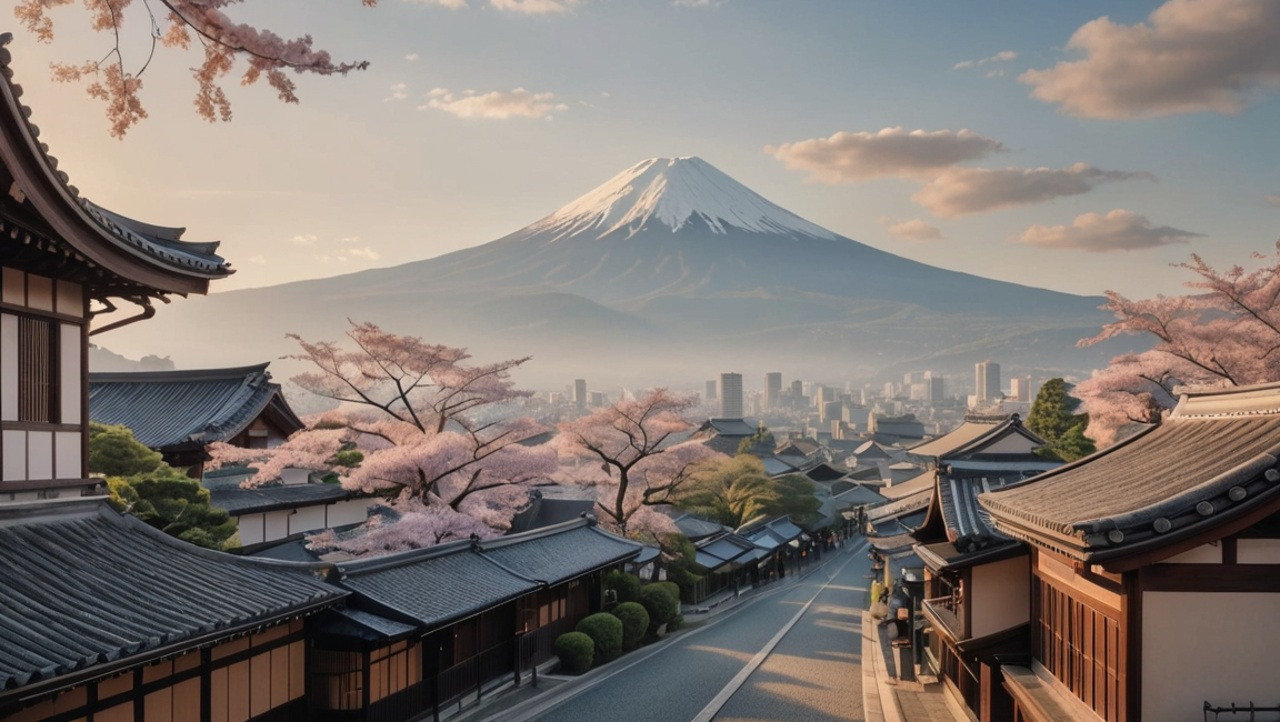Japan is a unique country where ancient traditions blend seamlessly with cutting-edge technology.
From tranquil temples to bustling cities, breathtaking seasonal landscapes
to the refined manners and hospitality,
Japan offers countless elements that captivate its visitors.
In this blog, I, as a native Japanese, will provide easy-to-understand information about Japan and share key tips for foreigners visiting Japan for the first time, helping you make the most of your trip.
First Impressions of Japan:
A Contrast of Tradition and Innovation
When travelers first arrive in Japan, one of the most striking things they notice is how seamlessly tradition and innovation coexist.
From the ancient shrines and temples of Kyoto, which have stood for over a thousand years, to the futuristic skyline of Tokyo, one of the world’s leading metropolitan cities,
these two contrasting worlds are not just side by side—they complement each other.
Both embody the essence of Japan, where past and present converge in a harmonious blend that fascinates and captivates visitors.
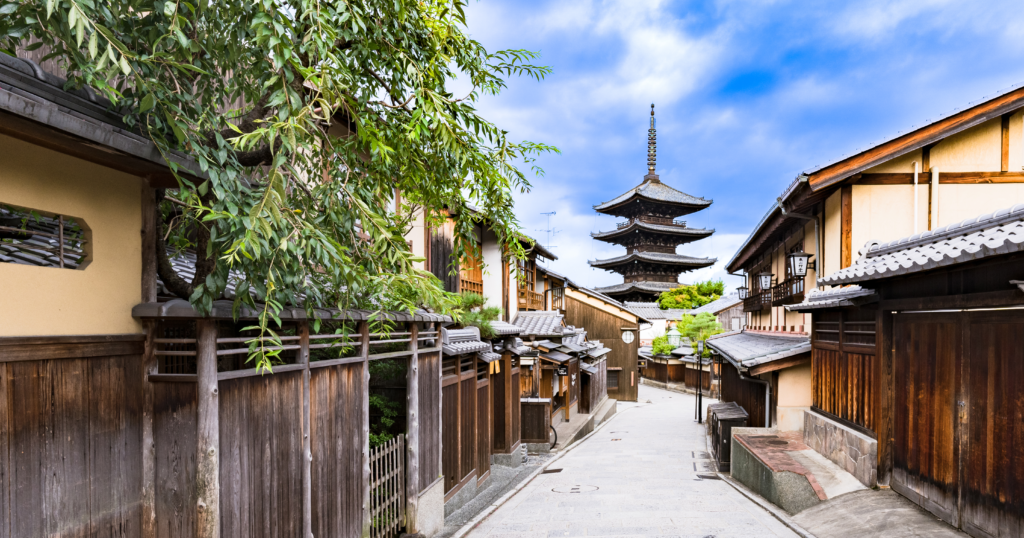
where centuries-old temples and traditional streets
tell stories of Japan’s rich heritage.
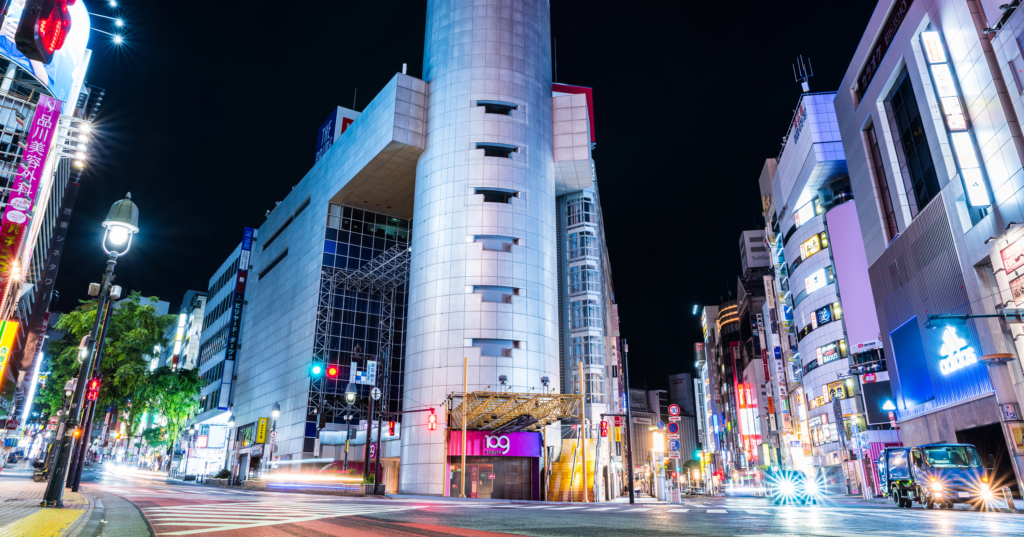
a futuristic metropolis where innovation
and excitement meet at every corner.
Geography and Climate:
Nature’s Ever-Changing Faces Throughout the Seasons
Japan’s geography and climate play a key role in the country’s charm.
The archipelago stretches over 3,000 kilometers from north to south, resulting in a variety of landscapes and climates.
From snowy winters in the north to the subtropical warmth of the south, Japan’s four distinct seasons offer a constantly changing backdrop, each bringing its own beauty.
Spring’s cherry blossoms, summer’s vibrant festivals, autumn’s fiery red leaves, and winter’s serene snowy landscapes—each season tells a different story,
making Japan a year-round destination for travelers.
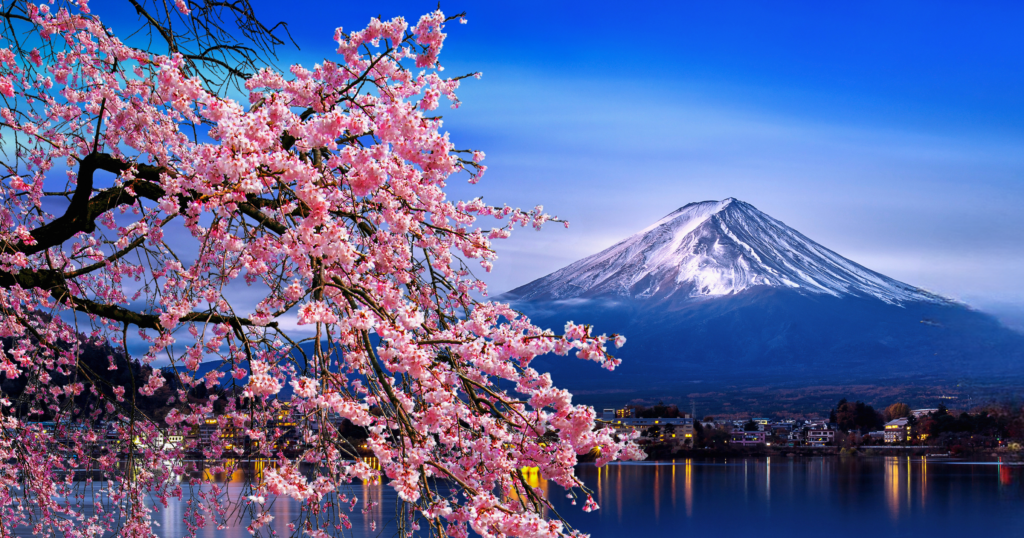
of cherry blossoms and the iconic Mount Fuji


with Mount Fuji.
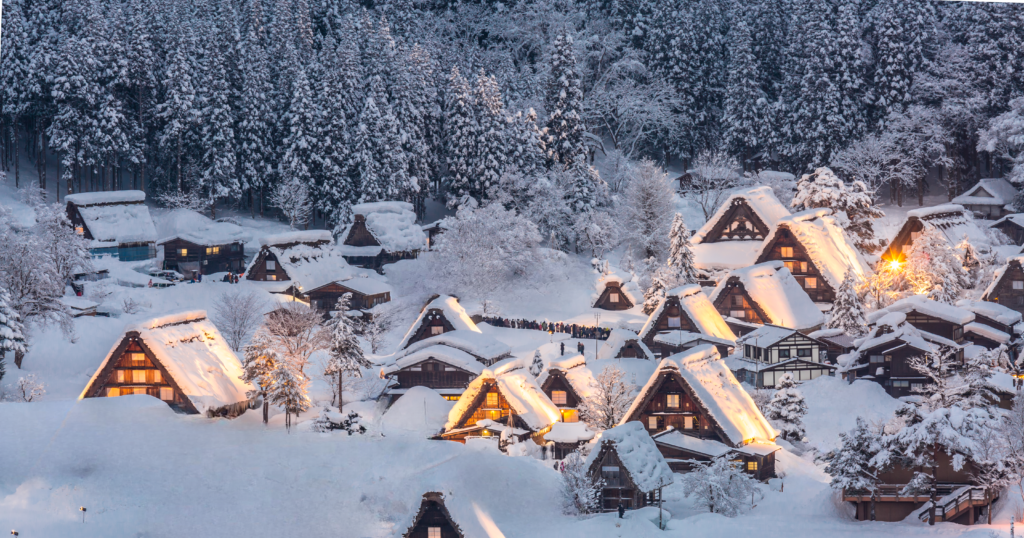
showcasing Japan’s traditional architecture.
Language and Communication:
No Worries Even If You Don’t Speak Japanese
Although the majority of Japanese people are not fluent in foreign languages, especially English, don’t let that discourage you.
While many Japanese tend to feel uncomfortable being directly approached by foreigners,
you’ll still find that English signage is widely available in major tourist areas,
and basic English is often understood.
Learning a few simple Japanese greetings and phrases will make your interactions with locals more enjoyable and enriching.
For example, phrases like “Konnichiwa” (Hello) or “Arigatou” (Thank you) will go a long way.
However, in rural areas, English signage is less common, so it’s a good idea to use translation apps and offline maps to ensure your travels are as smooth as possible.
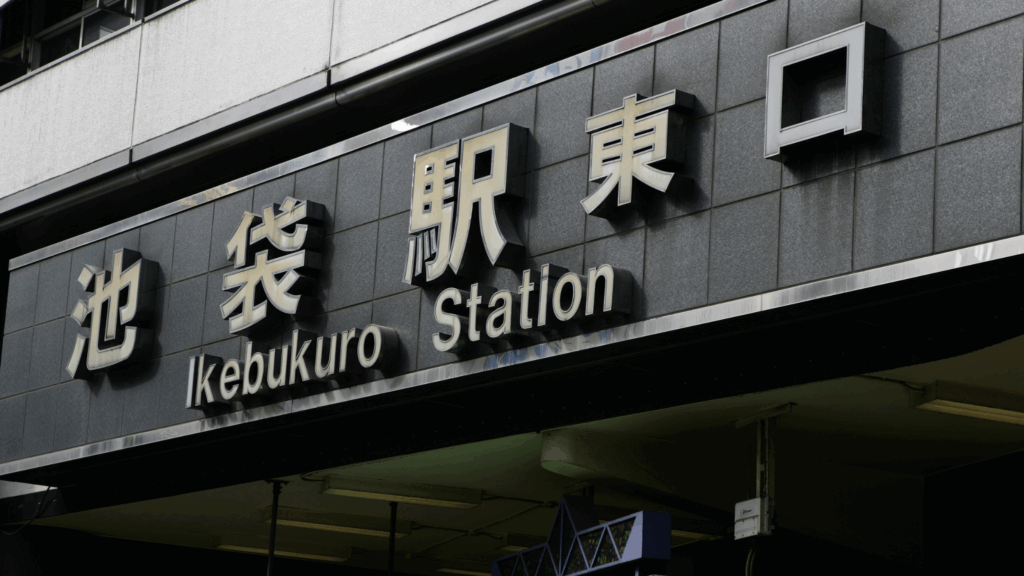
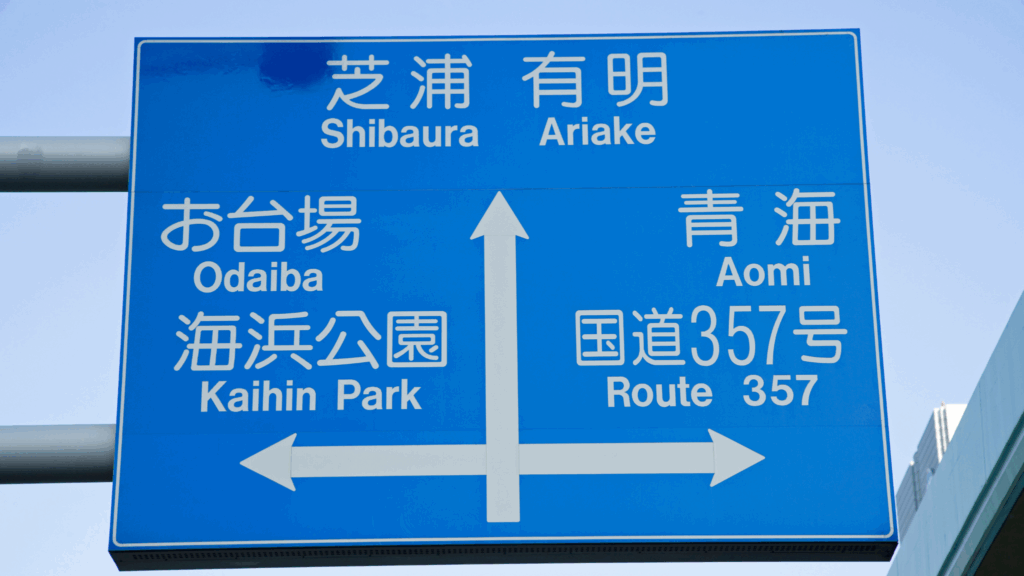
Currency and Payments: Cashless Society vs. Cash Culture
In Japan, credit cards and transportation IC cards (such as Suica, PASMO) are widely accepted. However, in rural areas, cash is still often required.
ATMs are commonly found in convenience stores and accept foreign-issued cards.
It’s advisable to use cash in rural areas and rely on cashless payments in urban areas for convenience.
Note that currency exchange services for foreign travelers are limited outside of major cities,
so it’s recommended to prepare cash before departure or immediately upon arrival.
Currency and Payments: Cashless Society vs. Cash Culture
In Japan, credit cards and transportation IC cards (such as Suica, PASMO) are widely accepted. However, in rural areas, cash is still often required.
ATMs are commonly found in convenience stores and accept foreign-issued cards.
It’s advisable to use cash in rural areas and rely on cashless payments in urban areas for convenience.
Note that currency exchange services for foreign travelers are limited outside of major cities,
so it’s recommended to prepare cash before departure or immediately upon arrival.
Cultural Etiquette – Understanding Japan’s Unique Customs
In Japan, it’s common to maintain quiet behavior in public places and to remove shoes before entering indoor spaces.
Additionally, customs such as standing in line, being considerate of others, and avoiding loud conversations reflect the culture of mutual respect.
By understanding these basic manners, you’ll leave a much better impression on the locals.
Safety and Transportation
– One of the Safest Countries in the World
Japan is known for its exceptional safety, making it a great destination for solo travelers,
including women.
Public transportation is incredibly reliable and convenient. Trains and buses run on time,
and the cleanliness of stations and vehicles often surprises many travelers.
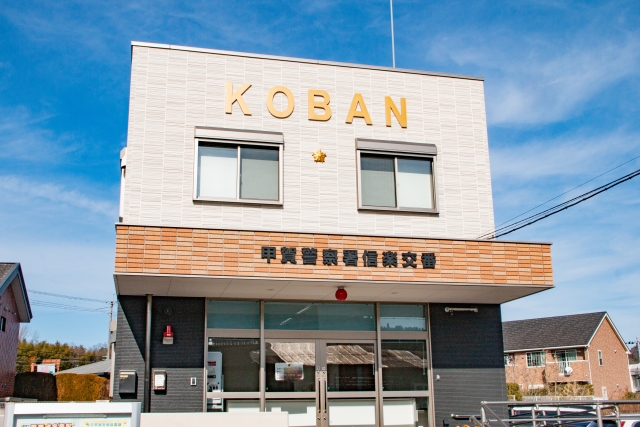
a local police box on the street corner can be your lifeline
“Koban” – Japan’s Unique Police Boxes Offering Safety and Support
In cities across Japan, you’ll find many small police stations known as “Koban.”
At these stations, police officers are ready to assist with directions, lost items, or any concerns you may have.
Tourists can also make use of these services,
so don’t hesitate to stop by if you find yourself lost or in need of help.
This Koban system is one of the key factors contributing to Japan’s high level of safety.
Travel Planning: Best Seasons, Transportation,
and Accommodation Choices
Temperature and Clothing for Each Season
Japan’s climate varies by region, and each season offers its own unique charm.
It’s important to dress appropriately for the season when traveling to Japan.
Spring (March to May)
Spring is the season for cherry blossoms, and temperatures typically range from 10°C to 20°C (50°F to 68°F).
Mornings and evenings may feel a bit chilly, so light jackets or cardigans are recommended.
Summer (June to August)
Summer in Japan can be hot and humid, especially in urban areas where temperatures often exceed 30°C (86°F).
Light clothing is essential for staying comfortable. Be prepared for sweat due to high humidity during the summer months.
Autumn (September to November)
Autumn is the season for beautiful fall foliage, with temperatures ranging from 15°C to 25°C (59°F to 77°F).
Mornings and evenings can be cooler, while afternoons may be warm,
so layering your clothes is a good option.
Winter (December to February)
Winter in Japan can be cold, especially in the northern and mountainous regions where snow is common.
Temperatures often drop below 0°C (32°F), so warm clothing and winter gear are essential.
Transportation
Japan’s transportation system is highly convenient, but with the increase in tourism, congestion and difficulty in finding taxis have become more common.
Taxis
In urban areas, it can be challenging to catch a taxi due to the increase in tourists.
This is especially true near popular tourist attractions and during busy hours.
If you need a taxi, it’s recommended to either arrange one in advance
through your hotel or use a taxi app like JapanTaxi.
Trains and Buses
Japan’s rail and bus systems are highly developed, making it easy to get around most cities. However, during peak hours, they can get crowded.
It’s best to avoid traveling during rush hours if possible.
Rental Cars
If you are able to drive, renting a car is particularly useful
when visiting regional tourist destinations.
It’s advisable to make a reservation in advance to ensure a smooth experience.
Accommodations
Japan offers a variety of accommodation styles, including hotels, ryokan (traditional inns),
and guesthouses. You can choose based on your travel purpose and budget,
but it’s important to book in advance, especially in popular tourist destinations.
- Booking Timing
During peak tourist seasons, hotels and ryokan around famous tourist spots can fill up quickly.
This is particularly true during busy periods such as the New Year, Obon holidays,
and Golden Week. It’s advisable to make reservations several months in advance.
Cultural Tips : What to Know Before You Go
Japan is a country deeply rooted in its own unique culture and etiquette.
To make your trip smoother and more enjoyable, keep the following points in mind.
Manners at Hot Springs and Public Baths
Before entering the bathing area, remove all your clothes in the changing room.
Be aware that visible tattoos may prevent entry in some facilities.
Also, avoid putting towels into the bathwater.
Taking Off Your Shoes
It is customary to remove your shoes when entering a home, traditional inns (ryokan), temples, and certain restaurants.
Slippers are usually provided at the entrance.
Staying Quiet in Public Spaces
Japanese people generally prefer a quiet environment.
Keep conversations to a minimum on buses, trains, and Shinkansen (bullet trains).
Try to refrain from talking on your phone and use earphones
at a low volume if you listen to music.
Lining Up
Forming orderly lines is an important part of daily life in Japan.
When boarding transportation or waiting to shop, make sure to queue properly.
Always allow people to exit vehicles before boarding.
Smoking Etiquette
Smoking is permitted only in designated smoking areas.
Walking while smoking is generally prohibited, and many cities enforce strict no-smoking rules in public spaces.
Carrying a portable ashtray is recommended if you smoke.
Carrying and Sorting Your Trash
Public trash bins are rare in Japan.
Be prepared to carry your trash with you until you find a bin, and make an effort to separate waste into categories like cans, bottles, and burnable items.
Emergency Contacts
In case of accidents or medical emergencies, dial 119 to call an ambulance or fire truck.
For police assistance, dial 110.
The Culture of Bowing
Bowing is a traditional gesture of greeting, apology, and gratitude.
It symbolizes respect and shows that you have no hostile intentions.
Saying “Itadakimasu” and “Gochisousama”
Before a meal, say “Itadakimasu” to express thanks for the food and the effort involved in preparing it.
After finishing, say “Gochisousama deshita” to show appreciation for the meal.
Reading the Atmosphere (“Kuuki o Yomu”)
Japanese communication often relies on nonverbal cues and understanding what is implied rather than stated outright.
Familiarizing yourself with the concept of “honne and tatemae” (true feelings vs. public behavior) can help you navigate social situations more smoothly.
Wi-Fi Access
Free Wi-Fi spots are limited in Japan.
It is advisable to arrange a portable Wi-Fi router or a local SIM card before your trip to stay connected.
No Need for Tipping
Tipping is not customary in Japan.
Hotels, restaurants, and taxis generally include service charges in their prices, so there’s no need to leave extra tips.
Power Outlets and Voltage
Japan uses Type A power plugs, the same as those in the United States.
The voltage is 100V, which is lower than in many other countries.
Make sure your devices are compatible with 100V, or bring a voltage converter if necessary.
Also, note that while the plug shape is the same as in the U.S., some devices requiring
110–120V may not perform optimally without a converter.
By keeping these cultural points in mind, you’ll be able to enjoy a respectful and comfortable journey throughout Japan.
Common Challenges for Foreign Visitors
(and How to Overcome Them)
While Japan is a wonderful destination for travelers, there are a few common challenges that
foreign visitors often face.
Understanding these issues and knowing how to navigate them can make your trip smoother
and more enjoyable.
Language Barrier
Although English is widely taught in schools, it is not commonly spoken in many areas.
To overcome this challenge:
Learn basic Japanese phrases:
Even simple greetings like “Hello” (“こんにちは” / “Konnichiwa”)
and “Thank you” (“ありがとう” / “Arigato”) can go a long way.
Translation apps:
Google Translate or other translation apps can help bridge the communication gap.
Station signs:
Most major transportation hubs have English signage, making it easier to navigate.
Cash-based Society
Japan is still largely a cash-based society, and while credit cards are accepted at many places, there are still many establishments that prefer cash. Some key points to keep in mind:
Currency exchange:
There are few currency exchange locations outside of major cities and airports,
so it’s advisable to exchange money beforehand or withdraw cash at ATMs
that accept international cards.
ATMs:
ATMs are available in convenience stores (like 7-Eleven and Lawson), and international cards can be used in many of these machines.
Limited Luggage Storage Options
Japan has limited luggage storage facilities, and travelers should plan accordingly.
For example:
Coin lockers:
Most major train stations and tourist spots offer coin-operated lockers, but these can fill up quickly, especially during peak tourist seasons (e.g., Golden Week, Obon, and New Year’s holidays).
Luggage storage services:
If lockers are unavailable, several services offer luggage storage at train stations, airports, and tourist centers. For example:
ecbo cloak:
A service that allows you to store luggage at various locations,
including major train stations and tourist spots. You can reserve a spot online in advance.
Luggage storage at hotels:
Many hotels offer luggage storage before check-in or after check-out.
Always confirm with your accommodation.
Luggage delivery services:
Services like Yamato Transport (Kuroneko Yamato) offer luggage delivery,
allowing you to send your luggage from one location to another,
making it easier to travel light during your sightseeing.
Public Behavior and Etiquette
Japanese society has certain behavioral norms and etiquette that might be different from what you’re used to. Here are some key tips:
Keep noise to a minimum:
Japanese people value silence in public places, especially on trains, buses, and subways. Avoid speaking loudly or using your phone in these areas. If you listen to music,
use headphones and keep the volume low.
Queuing and waiting:
In Japan, people form lines in an orderly fashion at train stations, bus stops,
and even at stores.
Cutting in line is considered impolite. Always wait your turn, and allow people to exit
before boarding trains or buses.
Smoking:
Smoking is only allowed in designated smoking areas.
Smoking on the streets or while walking is prohibited in many areas.
Be sure to use portable ashtrays to dispose of cigarette butts properly.
Limited Free Wi-Fi Access
Unlike many other countries, free Wi-Fi is not commonly available in public spaces in Japan. To stay connected, consider:
Renting a pocket Wi-Fi:
A portable Wi-Fi router can be rented for the duration of your trip and used anywhere.
SIM cards:
You can purchase a Japanese SIM card or rent a phone with a data plan at the airport or in major cities.
Medical Emergencies and Safety
In case of an emergency:
Emergency numbers:
Dial 119 for an ambulance or fire department, and 110 for the police.
Pharmacies and hospitals: Most pharmacies in Japan carry over-the-counter medicines
for common ailments.
In case of serious health issues, many hospitals in major cities have English-speaking staff.
This English version should now cover the major points effectively
while addressing common challenges foreign visitors face when traveling to Japan.
Let me know if you’d like any further adjustments or additions!
